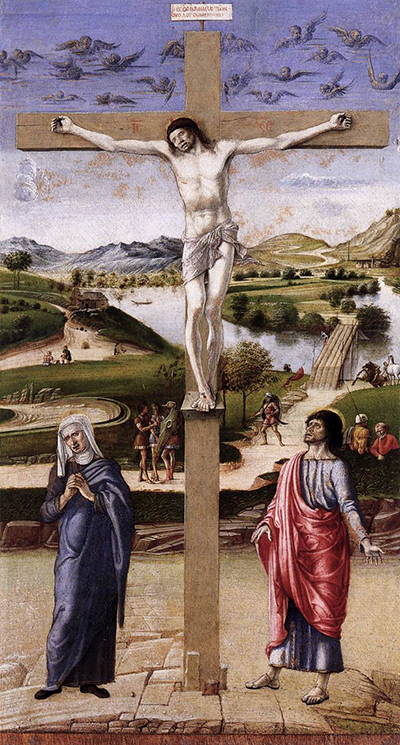This Giovanni Bellini painting from 1458-1459 is sometimes known as Crucifixion with the Virgin and Saint John the Evangelist, as explained by the figurative detail in the foreground as Jesus Christ's suffering is palpable.
This detailed scene features a sprawling landscape across the background with many supporting figures who provide a setting of activity and healthy society. A small bridge adjoins two narrow areas of land whilst the rest of the landscape is untouched by man, with trees dotted across the edge of winding rivers. There are also hills in the background which sit against a clear sky. It is the Museo Correr in Venice which holds this artwork, having been bequeathed it in 1830.
Many of the qualities of this painting are distinctly Venetian, from the bright colour scheme to the use of detailed landscapes across the background. Neither of these characteristics were particularly common in other Italian schools at this time, with artists in Rome preferring a more classical style. Within Venice, you will see similarities between Bellini and Giorgione, Titian and Mantegna. You will also find much the same with Tintoretto's paintings, though he was never completely accepted by his closest competitors.
The artist creates a stone path on which the cross has been inserted and this separates the three key figures from the rest of the composition. It also provides almost a stage from which this famous Christian passage can be "played" by Jesus Christ and the grieving Virgin on one side, with Saint John the Evangelist on the other. The word Titulus can be found inscribed on the cross and this translated as "Jesus, King of the Confessors." Scientific research has suggested that this was actually added later, by someone else.




